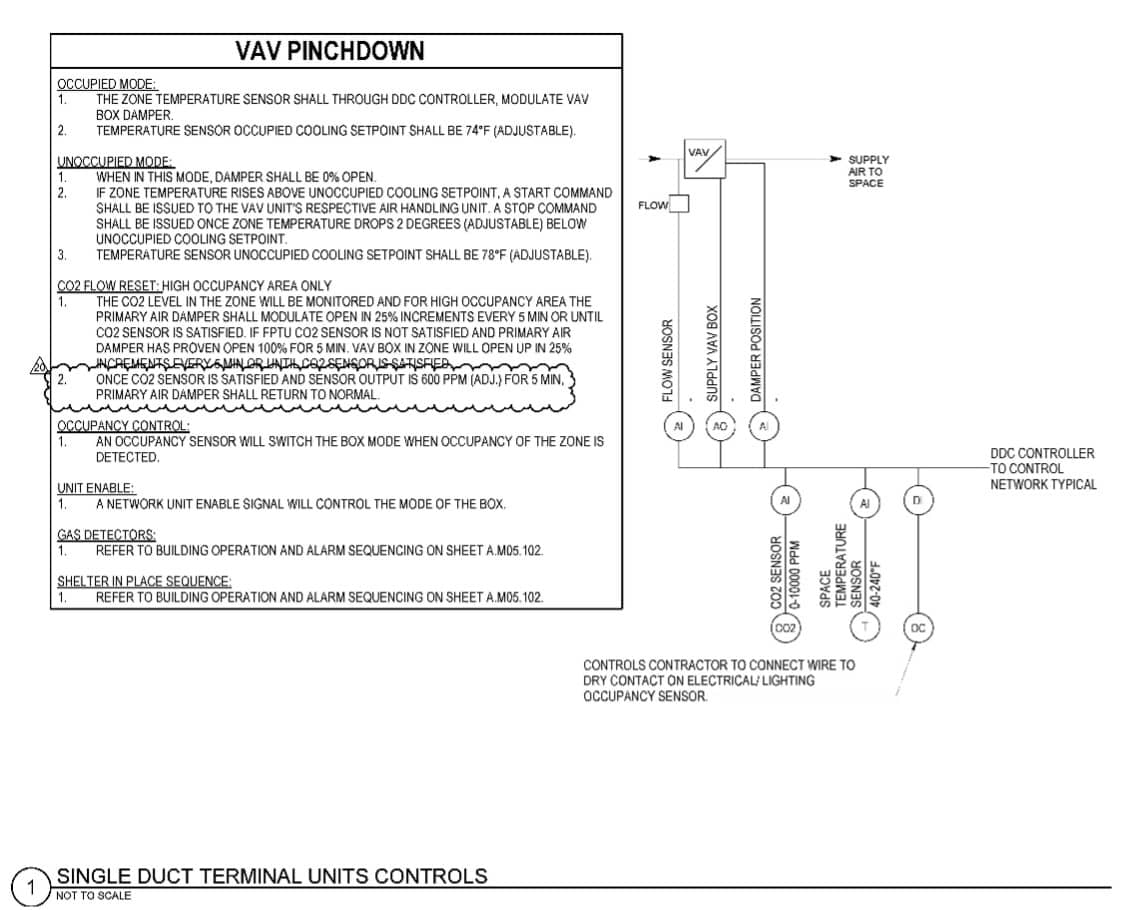“Quality is never an accident; it is always the result of high intention, sincere effort, intelligent direction and skillful execution; it represents the wise choice of many alternatives.” – William A. Foster
With the ever-increasing demand for energy efficiency, a higher frequency of project designs are adhering to the U.S. Green Building Council (USGBC) LEED requirements. These requirements can include a lighting controls system that is integrated into the multiple systems within a building. The commissioning authority (CxA) onsite plays a pivotal role in the correct implementation and testing of this integration. For the purpose of this discussion, the primary focus will be on the role of the CxA during the integration and verification of the lighting control system into the plug load control and the HVAC system.
Design Review
The CxA should take time during the design review process to confirm the design intent of the Engineer. This includes noting which VAV boxes will be integrated to which occupancy sensors as well as clarifying the exact operation the HVAC system will take upon an occupancy being sensed in the space. It is also important for the CxA to note the appearance or absence of any lighting system-controlled plugs in the space during design review. Figure 1 depicts an example of where an Engineer mentions the integration of lighting control system with the HVAC system but fails to go into detail. By a quick review of the contract drawings, the CxA can determine the necessary questions to pose to the Engineer in the early stages of a project.

Submittal Review
Another important milestone in the construction process is submittal review. This is an excellent time for the CxA and Construction Team to ensure any equipment required for proper integration of the systems is detailed. On a recent project, the Construction Team failed to note the necessary lighting control hardware was not detailed in the approved construction documents. This led to the Electrical Contractor running a significant amount of CAT-5 cable to the desired occupancy sensors after ceiling tile had been installed. The construction timeline suffered significantly due to this mishap. The issue could have easily been avoided had the proper review of the lighting controls submittal taken place.
Lighting Controls System Integration
Prior to any functional testing commencing the lighting control system must be programmed by the third party vendor and deemed fully operational. The CxA should plan to attend the initial programming of the lighting control system to learn the correct way to adjust any time delay and dual-tech functionalities on the sensors. That being said, the CxA should always be accompanied by an electrician with knowledge of manipulating the lighting control system for all portions of functional testing.
For functional testing of the plug load control, a plug tester will be inserted into the integrated plug and the occupancy sensor timer should be adjusted to the minimum “test” time out. The CxA should confirm the plug is de-energized upon no motion or sound being sensed in the space for the allotted time. Once this integration has been verified, the Electrician can return the device to is settings prior to testing. The HVAC portion of the integration will be a bit more involved as the building automation system (BAS) graphics will need to be observed by one team member as the other team member moves throughout the space triggering each associated occupancy sensor. For areas with multiple occupancy sensors, the sensors that are not being verified will need to be covered to avoid accidental detection. This will aid in point to point sensor verification which should be performed in conjunction with the HVAC sequence verification. For this portion of the integration testing it is important that a representative from the Controls Contractor is present to assist, should any issues arise.
Lighting system integration can be a very difficult portion of the construction process for teams to navigate smoothly. The CxA can significantly mitigate any interruptions to the project by providing a thorough review of the systems at the many different phases. Good communication between Construction Team members can be the difference between a successful installation of a system and a system that generates multiple issues.
Author written by Cooper Smith, EAB Team Member
